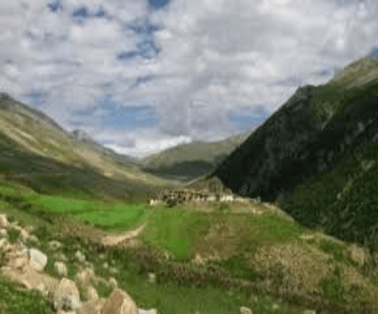Pakistan Occupied Kashmir (PoK) has witnessed a deadly outbreak of violence, with at least four people killed and over 100 injured during clashes triggered by rising prices of essential commodities such as wheat flour, electricity, and fuel. The unrest reflects the deepening political and economic crisis in PoK and its ongoing tensions with Islamabad.
What Triggered the Violence in Pakistan Occupied Kashmir?
- The recent wave of unrest began on May 10 after the overnight arrest of several leaders of the Jammu Kashmir Joint Awami Action Committee (JAAC), which had planned a “long march” to Muzaffarabad on May 11.
- The crackdown sparked widespread outrage, prompting thousands to take to the streets, resulting in clashes with the police.
- As tensions escalated due to the strike, which paralysed all walks of life in the region, Pakistan’s Prime Minister Shehbaz Sharif approved the grant of a $86.25 million subsidy programme on May 13.
- While the decision reduced the prices of wheat and flour, prompting the JAAC to chart its next course of action, renewed violence followed on May 14 after a convoy of paramilitary Rangers called to maintain law and order came under attack by “charged protesters” as the troops were moving out of the region.
- Pakistan’s economic crisis and high inflation have resulted in hardships for its people, and a section of traders have been additionally hit by the stopping of trade with India.
Background of the Violence in Pakistan Occupied Kashmir
- The recent wave of violence can be traced to last year’s mass protests and a civil disobedience campaign that broke out across Pakistan against high wheat prices and electricity tariffs.
- At the forefront of the 2023 protests was JAAC — a committee comprising traders, labour leaders and civil society members.
- The association’s main demands include subsidised wheat flour, fair electricity pricing based on hydropower generation costs and an end to the privileges of the elite class.
- The panel reached an agreement with an official reconciliation committee of cabinet members regarding their demands concerning electricity tariffs in December last year. An official notification was issued in February.
- However, the committee announced a protest across the State in April, asking people to stage a “long march” to Muzaffarabad against “non-fulfilment” of the commitments made by the official panel.
Pakistan’s Economic Crisis
- Pakistan’s foreign exchange reserves have fallen drastically ever since global food and fuel prices rose in the aftermath of the Russia-Ukraine war.
- According to the State Bank of Pakistan, the country’s forex reserves fell from a peak of $20.1 billion in August 2021 to $2.9 billion in February 2023, enough to cover only a month’s imports.
- Pakistan imports nearly 40% of its total primary energy supply.
- Pakistan’s largely aid-dependent economy has an underdeveloped private sector, and its stock market has shown very little growth over the years.
- The country’s Gross Domestic Product (GDP) shrank by 0.17% during FY23.
- The International Monetary Fund (IMF) recently said Pakistan needed gross financing worth $123 billion over the next five years, and that the country was expected to seek $21 billion in the fiscal year 2024-25 and $23 billion in 2025-26.
India-Pakistan Trade Fallout
- Traders in PoK were hit hard after India raised customs duty to 200% on Pakistani products such as dry dates, rock salt, cement, and gypsum following the Pulwama terror attack of February 2019.
- As a result, Pakistan’s exports to India fell from an average of $45 million per month in 2018 to only $2.5 million per month between March and July 2019
- The situation was made more difficult after Pakistan stopped all trade following the constitutional changes carried out by India in Jammu and Kashmir in August 2019.
- India-Pakistan trade has shrunk to a low of about $2 billion annually over the last five years, a small fraction of the $37 billion trade potential estimated by the World Bank.
Long-standing Issues in Pakistan Occupied Kashmir
- Activists and politicians from PoK have long accused Islamabad of “serious discrimination,” protesting against heavy cuts in budgetary grants, imposition of “unjust” taxes on electricity bills, rise in inflation, shortage of wheat, load shedding and not considering locals for jobs.
- PoK produced about 2,600 MW of hydropower and required only 350 MW, but the State government was neither given its due share in the Net Hydel Profit as permissible to provinces under Article 157 nor under the National Finance Commission (NFC) that entitled it to about 3.64% share in federal resources.
- Pakistan failed to take responsibility for 400 billion Pakistani rupees payable to the region for Mangla dam water charges and hydel profit on the Neelum-Jhelum project.
- PoK also accused the government of not accepting request for a hike in the salaries of government employees in line with federal and provincial employees.
Historical Background of Pakistan Occupied Kashmir
- PoK was historically part of the princely state of Jammu and Kashmir, which acceded to India in 1947 after the Partition.
- However, the region was illegally occupied by Pakistan in 1947 following an invasion by Pashtun tribesmen and the Pakistani Army.
- PoK covers an area of 13,297 sq km and has a population of over 40 lakh people. It is divided into 10 districts, with the capital being Muzaffarabad.
- In 1963, Pakistan ceded over 5,000 sq km of this land to China in the Shaksgam area.
- Gilgit Baltistan (GB) is a separate region to the north of PoK and east of the Pakistani province of Khyber Pakhtunkhwa.
- GB was leased to the Dogra ruler of Jammu by the British and later handed over to Pakistan in 1947.
- Neither PoK nor GB are officially listed as part of Pakistan’s four provinces.
- Both are considered “autonomous territories” ruled directly from Islamabad, a fiction maintained by Pakistan to avoid damaging its international position on the Kashmir dispute.
- For India, PoK and GB are part of the state of Jammu and Kashmir, which is an integral part of the country as per the 1994 Parliamentary resolution.
India’s Claim Over Pakistan Occupied Kashmir
- The fact that PoK is an integral part of India has been our consistent policy ever since 1947.
- In 1947, Pakistan’s Pashtoon tribals attacked Jammu and Kashmir.
- So to tackle this critical situation the Ruler of that time Maharaja Hari Singh of Jammu and Kashmir sought military assistance from the Indian government and the then Indian Governor General Mountbatten signed an agreement on 26 October 1947 in which three subjects Defense, Foreign Affairs and Communications were handed over to India.
- Except these subjects Jammu and Kashmir was free to all its decisions.
- On the basis of this accession of treaty, the Government of India claims that India has the full right to interfere in the matters related to Jammu and Kashmir. Pakistan on the other hand doesn’t agree with India.
- The legality of transfer of territory of J and K through the instrument of accession to India is unquestionable.
- Pakistan’s claim on Kashmir is based on the declaration of 1993. As per this declaration, Jammu & Kashmir was among those 5 states in which rule of Government of Pakistan was supposed to be established. But India never accepted this claim of Pakistan.
- India has also made clear to the world that it is the internal matter of India
Conclusion
The recent violence in Pakistan Occupied Kashmir reflects the region’s deep discontent with economic mismanagement, political marginalization, and Islamabad’s failure to uphold basic governance standards. As protests grow, the long-standing question of PoK’s future—and its legal status as part of India—continues to be central to regional stability and international discourse.
To Download Monthly Current Affairs PDF Click here
Click here to get a free demo
Discover all about CLAT Exam



